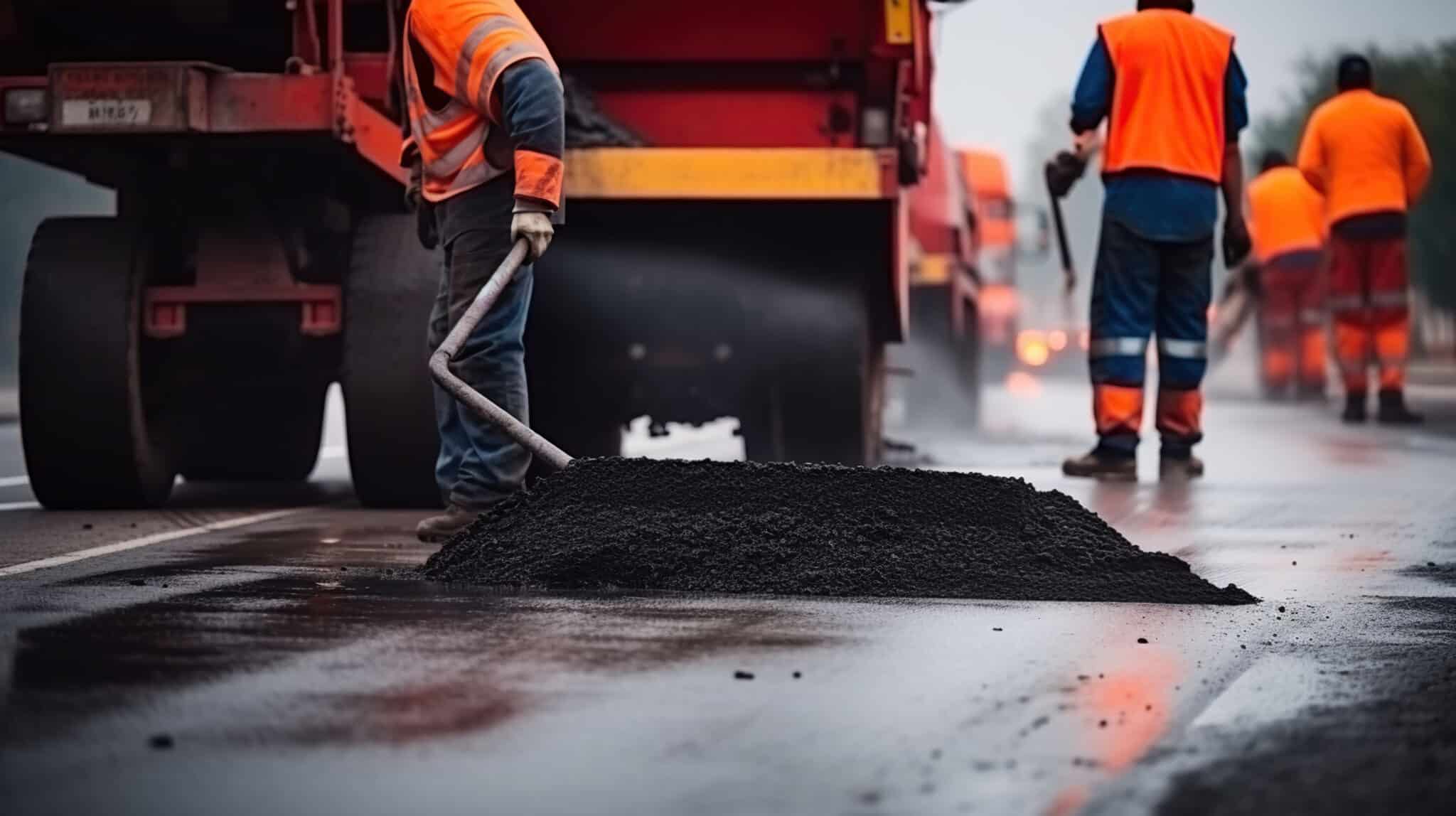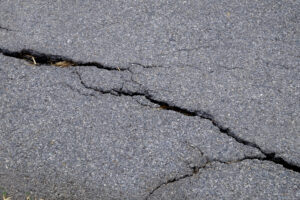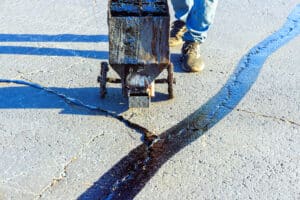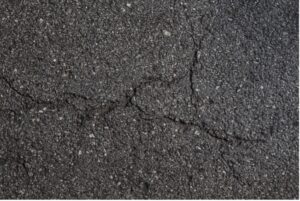Potholes are a familiar yet frustrating sight on many roads. For those who are responsible for their maintenance, understanding pothole formation is crucial. Just as property owners recognize the importance of sealing asphalt, it’s equally vital to know the causes and prevention of pothole damage. Whether you’re facing the aftermath of potholes or aiming to prevent them, this blog explains their causes, the damage they inflict, and the steps necessary for prevention.
A Closer Look into Pothole Damage
Potholes are formed primarily due to the wear and tear from traffic and the freezing and thawing of groundwater under the road surface. Over time, the water underneath the pavement expands and contracts, causing the asphalt to crack and eventually break apart, forming a pothole. These road blemishes pose large risks to vehicles and drivers. Hitting a pothole can lead to major vehicle issues, including tire punctures, alignment problems, and damage to the vehicle’s suspension system.
For property owners, potholes can be a major problem. Not only can potholes damage cars, they can also be a hazard to pedestrians. This could lead to liability issues if someone gets injured due to a pothole on your property. Also, potholes can decrease the value of a property, making it less appealing to potential buyers. These negative outcomes make it essential for property owners to avoid pothole damage if possible and fix existing potholes as soon as they can.
Pothole Causes: Why Potholes Form
Unfortunately, potholes are common on our roads, and the main reason behind their formation is the freeze-thaw cycle. Let’s dive into the science behind this cycle: when water gets into minor cracks in the asphalt, it sets the stage for a series of events. This water freezes and expands during colder temperatures, exerting pressure on the surrounding road material. This pressure causes those small cracks to widen and become larger.
But that’s only half of the story. As temperatures rise, the ice thaws and the water drains away, leaving a void underneath the road surface. This void means that the asphalt above does not have the support it once had. As vehicles continue to drive over this area, the structure is damaged even more, eventually leading to the formation of a pothole. This process repeats itself every season as the temperature changes.
It’s worth noting that late winter to early spring is often referred to as the “pothole season,” as the sudden temperature change is brutal on asphalt. Areas with frequent temperature changes, heavy rainfall, or scorching heat are more likely to have potholes popping up. So, it’s important to understand these environmental dynamics when preventing and fixing potholes effectively.
What Leads to Potholes?
Property managers have a lot on their plate, constantly juggling maintenance along with other daily tasks. With so much going on, it’s easy for things like potholes to slip through the cracks. But even though they may seem small, potholes can cause big problems if left unattended. Unfortunately, with all the other urgent tasks property managers have to deal with, potholes often get pushed down the priority list. Only when the problem gets worse do they realize they should have taken care of it earlier. That’s why strategic prioritization and proactive maintenance are so important in property management.
Regular inspections and timely interventions, such as patching and resurfacing, are crucial in preventing the occurrence of potholes. By addressing small damages promptly, before they have a chance to worsen, the longevity and safety of the asphalt can be preserved. By taking additional steps like installing effective drainage systems and designing roads with preventive measures, we can prevent potholes from forming in the first place. These efforts will not only reduce the occurrence of pothole damage but also ensure smoother and safer journeys for everyone on the road.
How to Prevent Potholes from Forming
Preventing potholes from forming is a far more cost-effective approach than addressing them once they have already formed. However, if one has already formed, quick action must be taken to prevent it from worsening and causing further damage.
Preventing Pothole Damage
To prevent potholes and keep our roads smooth, it’s important to understand how asphalt ages and what makes it vulnerable. Although asphalt can last a long time, regular maintenance by homeowners and property managers can extend its lifespan.
One of the primary preventive measures is sealcoating. This protective layer can help to keep water and other substances from getting into the asphalt, preventing cracking and other damage. Sealcoating lasts up to 3 years on average, but if you notice any cracks in your asphalt, it is best to sealcoat as soon as you can.
Another important thing to consider in preventing potholes is having effective drainage systems in place. When properly designed and installed, drains can redirect water away from the pavement, which helps reduce the risk of damage. This becomes even more important in areas with heavy rain or low-lying areas where water tends to collect.
Regular cleaning is also important for keeping asphalt in good shape and avoiding pesky potholes. Sweeping the area clean on a regular basis can help keep your asphalt in great condition. This is one of the easiest ways to preserve your asphalt. Even though it may seem like a simple task, keeping your pavement clear of debris can prevent small imperfections from becoming large headaches.
If the asphalt has developed cracks already, these cracks can also turn into potholes. One thing you can do to prevent the cracks from forming into potholes is sealing the cracks with crack seal. All of these preventative measures will end up saving you money in long-run so you don’t end up having to spend a fortune on a completely new asphalt surface.
Fixing Existing Potholes
When you spot a pothole, it’s important to prioritize its repair right away. If left unattended, these road craters can grow bigger and cause even more damage. The weakened area can deteriorate further with the pressure from traffic and changing weather, leading to more cracks and potholes. Plus, water can sneak in and make matters worse. By fixing potholes immediately, you not only extend the life of your pavement but also ensure the safety of drivers and pedestrians. Timely repairs are a smart and cost-effective way to maintain smooth, safe, and long-lasting roads.
At Superior Asphalt, LC, we’ve got you covered with a wide range of asphalt repair and patching services. If you’ve noticed a pothole pop up recently, don’t hesitate to reach out to our team for a quick and effective solution.
Get Help Preventing Potholes and Fixing Existing Ones
Potholes, though seemingly small issues, can escalate into major road hazards, impacting both
vehicle health and driver safety. Understanding pothole damage, its causes, and prevention methods will lead to longer-lasting and safer roads. It is always best to prevent potholes from forming in the first place, but if one has already formed, make sure to repair it as soon as possible. If you’re seeking expertise in pothole prevention or need to repair an existing pothole, contact us today!




